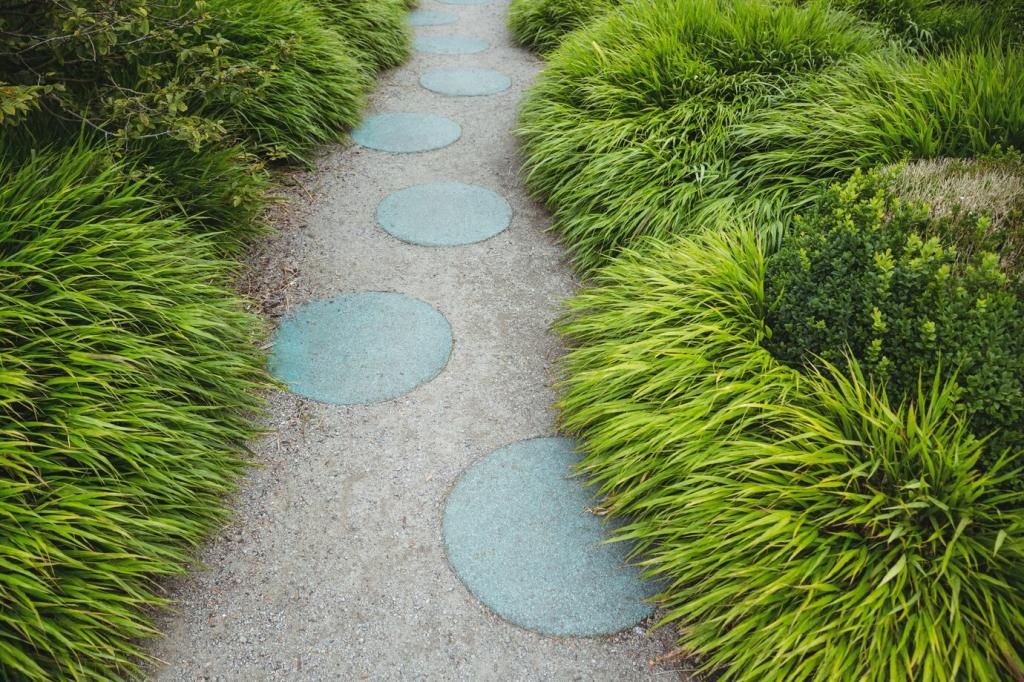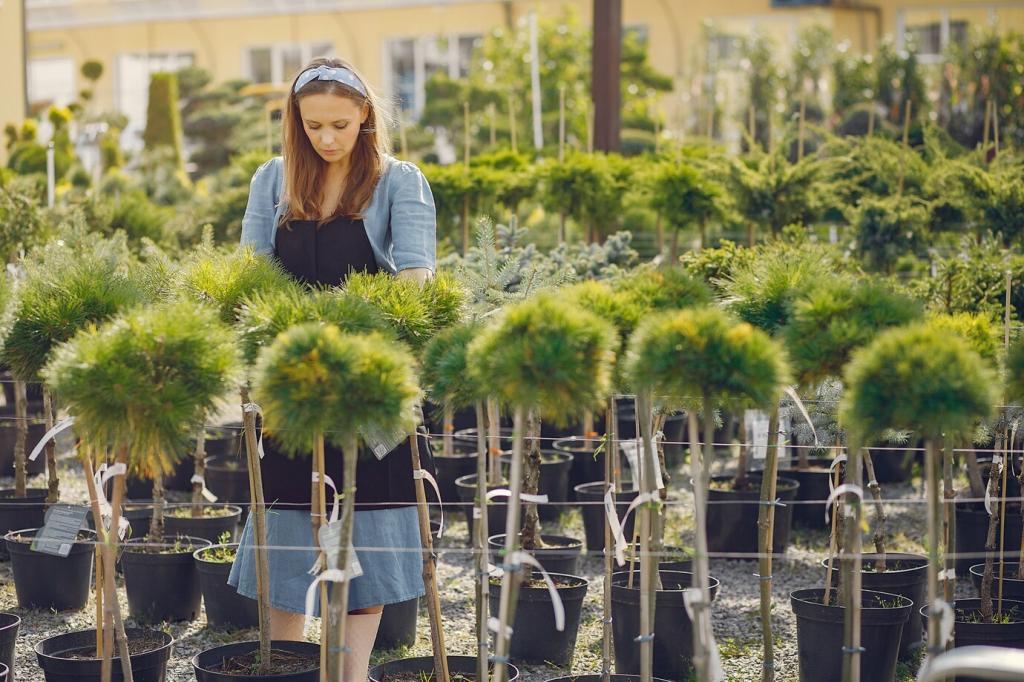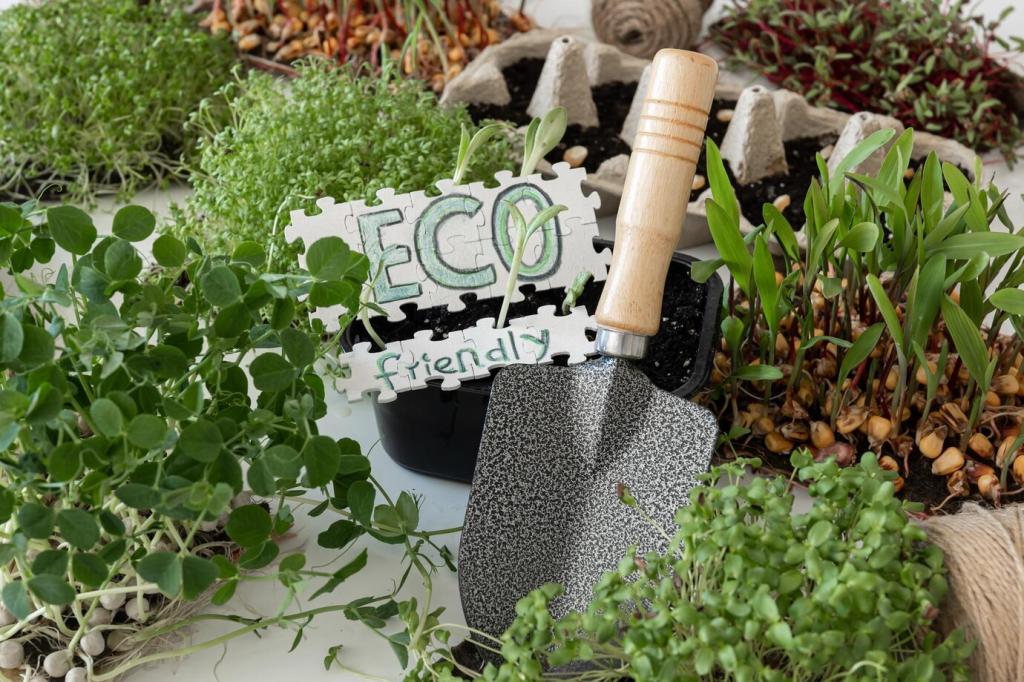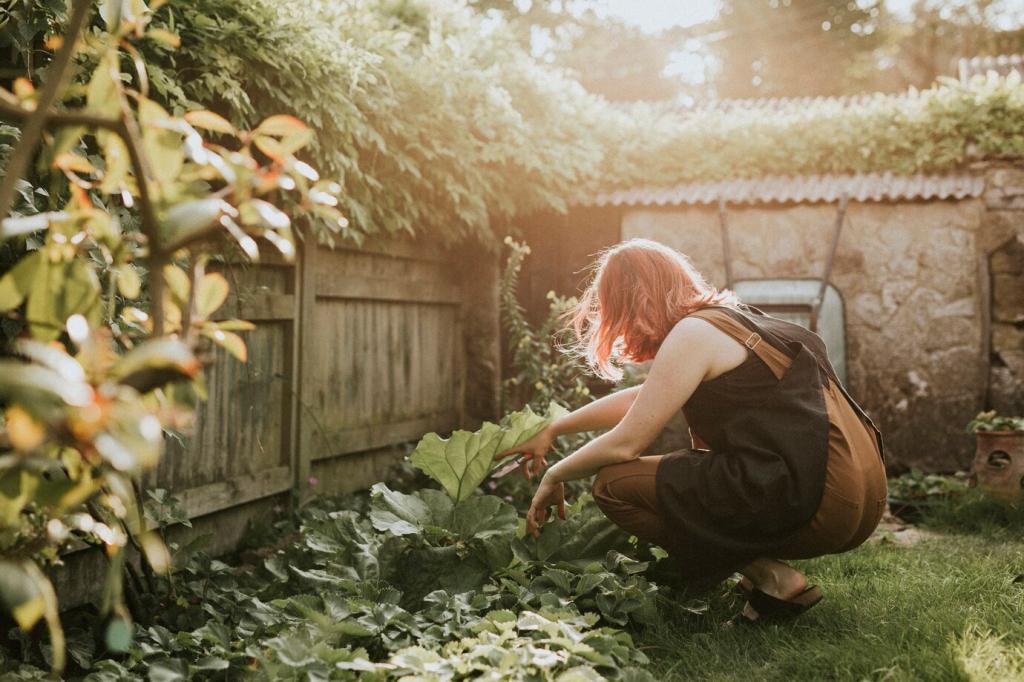
Edible Beauty: Incorporating Edible Plants in Sustainable Landscapes
Welcome! Today’s theme is Incorporating Edible Plants in Sustainable Landscapes. Discover how to weave food-bearing trees, shrubs, and herbs into a resilient, beautiful yard that feeds people, pollinators, and the planet. Subscribe for fresh ideas and share your edible landscape dreams with us!
Soil and Water: The Living Foundation
Feed the soil, not just the plant. Blend finished compost with leaf mold, avoid over-tilling, and protect fungal networks that deliver nutrients to roots. In our test beds, tomatoes gained vigor with less fertilizer after two seasons of consistent mulching. What’s in your compost?

Guilds and Biodiversity for Natural Balance
Center a semi-dwarf apple, ring it with nitrogen-fixing goumi, dynamic-accumulator comfrey, and flowering yarrow. Add garlic chives to deter borers. This layered guild reduces inputs and invites beneficial insects. Tell us which tree you’d like to guild, and we’ll suggest companions.
Calendula, alyssum, and borage do more than charm; they feed hoverflies and lacewings whose larvae feast on aphids. Interplant them between kale and peppers for protection and a painterly splash of color. What flowers have saved your harvest this year?
Serviceberries, elderberries, and pawpaws thrive with local climate rhythms while feeding wildlife and people. Native plants anchor ecosystems and reduce maintenance. Share your region, and we’ll recommend native edibles to start incorporating into your sustainable landscape.




Small Spaces, Big Flavor
01
Vertical Growing and Trellis Art
Train cucumbers up jute ladders, espalier apples along a sunny fence, and let scarlet runner beans paint a living curtain. Verticality multiplies harvests while creating privacy and shade. Post your sketch or photo, and we’ll help refine your vertical plan.
02
Containers that Work Hard
Use 15–20 gallon containers for peppers, dwarf tomatoes, or citrus. A blend of compost, coconut coir, and perlite balances nutrients, moisture, and air. Top with straw mulch to slow evaporation. What’s your most productive pot-grown crop so far?
03
Microclimates You Can Make
Reflective walls push warmth to figs; north walls shelter lettuce longer into summer. A small water feature moderates temperature swings and invites pollinators. Map your hotspots and cool corners, then match crops. Share your microclimate discoveries with our community.
Care, Pruning, and Gentle Pest Management
Open canopies to a vase shape so sunlight paints every leaf. Winter structural cuts and summer tip pinches balance vigor and fruiting. After one season of consistent pruning, our figs doubled yield and ripened evenly. Want our pruning calendar? Comment and we’ll share.

Staggered Harvests All Season
Plant early, mid, and late varieties of berries and stone fruits to keep bowls full from spring to fall. Succession sow greens every two weeks for steady salads. Share your harvest calendar template request, and we’ll send a printable planner.
A Neighborly Anecdote
When Maya replaced her front lawn with a blueberry hedge and thyme path, strangers started stopping to ask questions. By August, she was handing out bowls and recipes. One yard rippled into five on her block. What story will your landscape spark? Tell us.
Kitchen, Preservation, and Zero Waste
Quick-pickle radish pods, freeze pesto in cubes, and dry apple rings for winter snacks. Use trimmings for broth and skins for vinegar. Sustainable kitchens honor every harvest. Subscribe for our monthly preservation guide and share your go-to no-waste recipe.
Join our mailing list
